Multi-Stakeholder Influence on Dispensing Outcomes
Specialty pharmaceutical products are the prevalent innovation driver for the pharmaceutical industry today, moving through considerably more fragmented and complex channels than traditional retail-based products. For brands to be successful, manufacturers need to acutely understand the different players and influences in this evolving landscape and the impact on the patient journey. With the introduction of generic specialty products and biosimilars, the brand journey may not be clear. Our research focused on three key players in the ecosystem – the HCP, Payer, and Specialty Pharmacy to learn how their interactions ultimately determined what treatment(s) patients receive.
A triangulation of research approaches – both qual and quant – were utilized with HCP/office staff and specialty pharmacists to understand the barriers and pain points in dispensing a specialty pharmaceutical product with a generic within the therapeutic class. It is critical to understand the specific pain points related to communications across stakeholders.
How HCPs and SPs handle barriers to dispensing vary – with the best interactions based on the quality and efficiency of their relationship. While Specialty Pharmacies have the ability to dispense AB rated generics instead of the brand (for non-DAW scripts), this is not always the practice. Furthermore, Specialty Pharmacies are often measured on performance metrics tied to patient outcomes. This insight enabled the client to focus on reinforcing brand differentiation, availability of patient copay saving programs, and other patient assistance programs to help stakeholders engage with patients.


